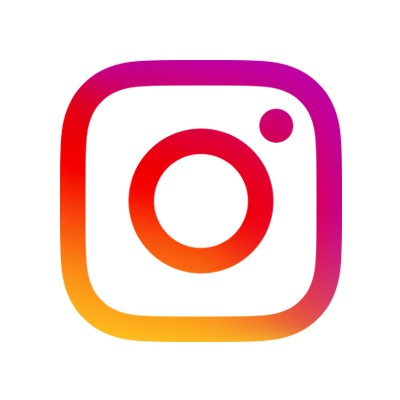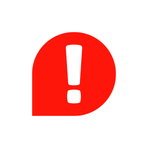Social Media Outage: A Digital Blackout
October 15, 2024, 6:31 am

Location: United States, California, Menlo Park
Employees: 1001-5000
Founded date: 2010
Total raised: $40M
Facebook
Location: United States, California, Menlo Park
On October 14, 2024, a digital storm swept through the United States. Facebook and Instagram, two giants of social media, faced a significant outage. Users were left in the dark, unable to connect, share, or scroll. The silence was deafening.
At its peak, over 12,000 users reported issues with Facebook. Instagram wasn’t far behind, with more than 5,000 complaints. Downdetector, the watchdog of online disruptions, became a hub of activity. The numbers climbed like a rollercoaster, reflecting the frustration of users across the nation.
This outage was not an isolated incident. Earlier this year, a similar blackout affected hundreds of thousands globally. Technical glitches have become the bane of our digital existence. They remind us how fragile our online connections can be. In a world where social media is the lifeblood of communication, these outages feel like a sudden blackout in a bustling city.
Meta Platforms, the parent company of Facebook and Instagram, faced the heat. Users turned to Twitter, sharing their frustrations and seeking answers. But Meta remained silent, a ghost in the machine. The company did not respond to requests for comment, leaving users to wonder about the cause of the disruption.
As the clock ticked, the situation improved. By 2:09 p.m. ET, the number of reported issues dwindled. Only 450 users faced problems with Instagram, while Facebook had around 659 complaints. The digital landscape began to return to normal. But the memory of the outage lingered like a shadow.
Social media outages are more than just technical hiccups. They are a reminder of our reliance on these platforms. For many, Facebook and Instagram are not just apps; they are lifelines. They connect friends, families, and communities. When they go dark, the impact is felt deeply.
In today’s world, social media is woven into the fabric of daily life. It’s where we share milestones, seek support, and express ourselves. An outage disrupts this flow. It creates a void that users scramble to fill. They turn to alternative platforms, seeking solace in the familiar.
The digital age has transformed communication. Yet, it has also made us vulnerable. Outages expose the cracks in our reliance on technology. They remind us that behind the screens, there are real people, real connections, and real emotions.
The aftermath of an outage often sparks discussions about the future of social media. Users question the stability of these platforms. They wonder if they can trust them to remain reliable. This uncertainty can lead to a shift in user behavior. Some may seek alternatives, while others may become more cautious in their online interactions.
Meta’s silence during the outage raised eyebrows. In an age where transparency is valued, a lack of communication can breed distrust. Users want to know what went wrong and how it will be fixed. They crave reassurance that their digital spaces are safe and secure.
The tech industry is no stranger to outages. Companies like Google, Twitter, and Amazon have all faced their share of disruptions. Each incident serves as a lesson. They highlight the importance of robust infrastructure and effective communication strategies.
As we navigate this digital landscape, it’s crucial to remember the human element. Behind every post, every like, and every share, there are individuals. They have stories, emotions, and connections. Outages remind us to cherish these interactions. They urge us to find balance in our online lives.
In the wake of the October 14 outage, users took to social media to express their thoughts. Memes and jokes flooded timelines, turning frustration into humor. This resilience is a testament to the human spirit. Even in the face of adversity, we find ways to connect and cope.
As the dust settles, the question remains: what can be done to prevent future outages? Companies must invest in their infrastructure. They need to prioritize user experience and communication. A proactive approach can help mitigate the impact of disruptions.
In conclusion, the recent Facebook and Instagram outage serves as a wake-up call. It highlights our dependence on social media and the need for reliable platforms. As users, we must remain vigilant. We should advocate for transparency and accountability from tech companies.
The digital world is a double-edged sword. It offers connection but also vulnerability. As we move forward, let’s strive for a balance. Let’s embrace technology while remembering the importance of human connection. After all, in the end, it’s the people behind the screens that matter most.
At its peak, over 12,000 users reported issues with Facebook. Instagram wasn’t far behind, with more than 5,000 complaints. Downdetector, the watchdog of online disruptions, became a hub of activity. The numbers climbed like a rollercoaster, reflecting the frustration of users across the nation.
This outage was not an isolated incident. Earlier this year, a similar blackout affected hundreds of thousands globally. Technical glitches have become the bane of our digital existence. They remind us how fragile our online connections can be. In a world where social media is the lifeblood of communication, these outages feel like a sudden blackout in a bustling city.
Meta Platforms, the parent company of Facebook and Instagram, faced the heat. Users turned to Twitter, sharing their frustrations and seeking answers. But Meta remained silent, a ghost in the machine. The company did not respond to requests for comment, leaving users to wonder about the cause of the disruption.
As the clock ticked, the situation improved. By 2:09 p.m. ET, the number of reported issues dwindled. Only 450 users faced problems with Instagram, while Facebook had around 659 complaints. The digital landscape began to return to normal. But the memory of the outage lingered like a shadow.
Social media outages are more than just technical hiccups. They are a reminder of our reliance on these platforms. For many, Facebook and Instagram are not just apps; they are lifelines. They connect friends, families, and communities. When they go dark, the impact is felt deeply.
In today’s world, social media is woven into the fabric of daily life. It’s where we share milestones, seek support, and express ourselves. An outage disrupts this flow. It creates a void that users scramble to fill. They turn to alternative platforms, seeking solace in the familiar.
The digital age has transformed communication. Yet, it has also made us vulnerable. Outages expose the cracks in our reliance on technology. They remind us that behind the screens, there are real people, real connections, and real emotions.
The aftermath of an outage often sparks discussions about the future of social media. Users question the stability of these platforms. They wonder if they can trust them to remain reliable. This uncertainty can lead to a shift in user behavior. Some may seek alternatives, while others may become more cautious in their online interactions.
Meta’s silence during the outage raised eyebrows. In an age where transparency is valued, a lack of communication can breed distrust. Users want to know what went wrong and how it will be fixed. They crave reassurance that their digital spaces are safe and secure.
The tech industry is no stranger to outages. Companies like Google, Twitter, and Amazon have all faced their share of disruptions. Each incident serves as a lesson. They highlight the importance of robust infrastructure and effective communication strategies.
As we navigate this digital landscape, it’s crucial to remember the human element. Behind every post, every like, and every share, there are individuals. They have stories, emotions, and connections. Outages remind us to cherish these interactions. They urge us to find balance in our online lives.
In the wake of the October 14 outage, users took to social media to express their thoughts. Memes and jokes flooded timelines, turning frustration into humor. This resilience is a testament to the human spirit. Even in the face of adversity, we find ways to connect and cope.
As the dust settles, the question remains: what can be done to prevent future outages? Companies must invest in their infrastructure. They need to prioritize user experience and communication. A proactive approach can help mitigate the impact of disruptions.
In conclusion, the recent Facebook and Instagram outage serves as a wake-up call. It highlights our dependence on social media and the need for reliable platforms. As users, we must remain vigilant. We should advocate for transparency and accountability from tech companies.
The digital world is a double-edged sword. It offers connection but also vulnerability. As we move forward, let’s strive for a balance. Let’s embrace technology while remembering the importance of human connection. After all, in the end, it’s the people behind the screens that matter most.

